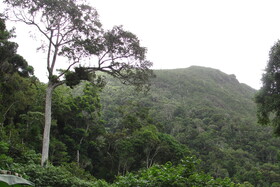


In the previous chapters of this knowledge category, we have learned: Forests are indispensable for a stable climate future. If the preservation as well as the afforestation of forests is so important for the stability and balance of ecosystems, the question arises what kind of forests should be created in afforestation, while at the same time the industrial perspective must not be neglected. Wood is an industrial product that has had an ever-increasing demand for thousands of years. Forestry must remain a viable industry for the modern world while pursuing and meeting climate and conservation goals.
With regard to the aspect of climate protection, a team of 60 scientists in China has clearly defined the goals. Afforestation projects with monocultures may score on the timescale, because fast-growing species form biomass relatively quickly and thus store CO2, but lose out in terms of their resilience to climate impacts and in terms of species conservation and biodiversity. Even here in Germany, forest dieback can be clearly observed in species-rich forests. Last year's droughts, for example, caused entire stands of spruce to die. Huge bare areas crisscross our forests and meanwhile the stands of beech and other deciduous trees are ailing. A turnaround in forests is being called for in many places, and its usefulness is becoming increasingly clear: According to scientists, species-rich forests store three times more carbon per hectare than a forest with individually planted species.
Tree diversity in forests and mixed crops also has important other effects: It leads to a stable ecosystem that is more robust to extreme weather events. Helge Bruelheide, professor at Martin Luther University Halle-Wittenberg and co-director of the German Center for Integrative Biodiversity Research, explains how significant this is, again from an industrial forestry perspective. After all, forest loss from a lack of resilience to climate change and the accompanying ten percent decline in tree species would result in production losses of 20 million U.S. dollars.
A solution to the problem lies hidden in nature itself. Nature has so far the best means and concepts to heal itself and forms balanced ecosystems, adapted to the prevailing climatic conditions, where it is given free space. The protection and the unconditional space preservation of natural so-called primeval forests and the protection of existing other forest types against human impacts is clearly demanded by all nations of this earth by the most current IPCC World Climate Council reports.
For many years, Naturefund has been observing nature's processes and using its sustainable models as a model for implementing conservation measures. Onion plants repel the carrot fly, carrots in turn repel the onion fly - vegetable gardeners are familiar with this fact. There are many natural synergies like this in nature, and we use and support them in our work for nature conservation. For this purpose, we have been using the innovative cultivation method Dynamic Agroforestry (DAF) in our projects at home and abroad for years. In DAF, different plants that positively influence each other are planted close to each other. In this way, they support and strengthen each other in growth and health. They protect their neighboring plants from wind and heavy rain, provide shade and can repel harmful insects or attract pollinators.
In addition, species-rich reforestation is carried out with trees, because trees play a special role in the system due to their deep root growth. An intact ecosystem is created that is altogether more resistant to the consequences of climate change, and at the same time leaves room for nature to preserve biodiversity. As a nature conservation organization, practical experience shows us time and again that the plants and the trees planted in DAF cultivation are healthy and produce a high yield, while at the same time the method protects nature and increases biodiversity.
Help us and plant trees in species-rich planting systems through our sustainable cultivation method Dynamic Agroforestry.
Discover tree projects and plant trees.
Sources:
mdr.de: Artenreiche Wälder als C02-Killer
naturwald-akademie.de: Artenreiche Wälder speichern doppelt so viel Kohlenstoff wie Monokulturen